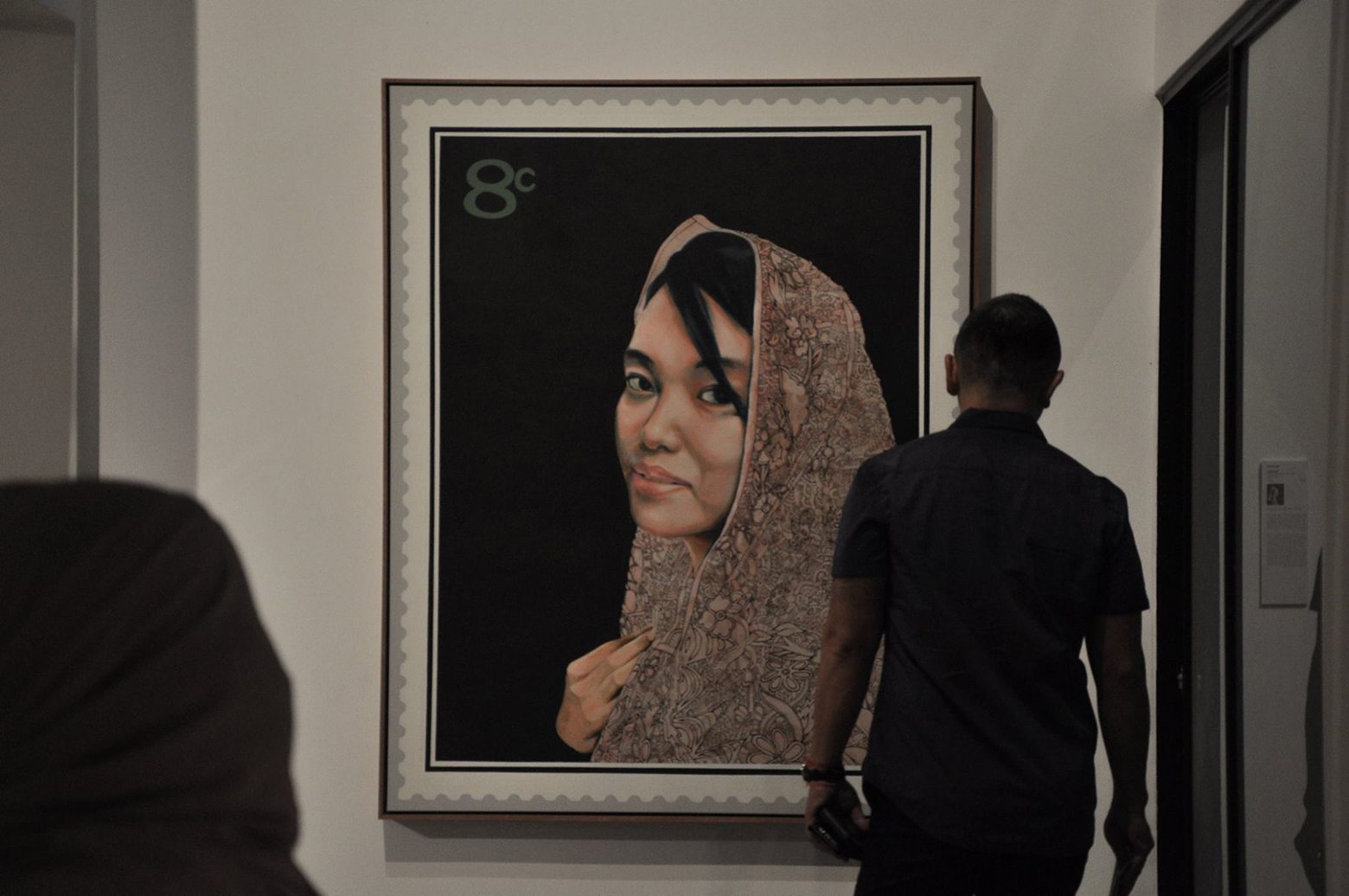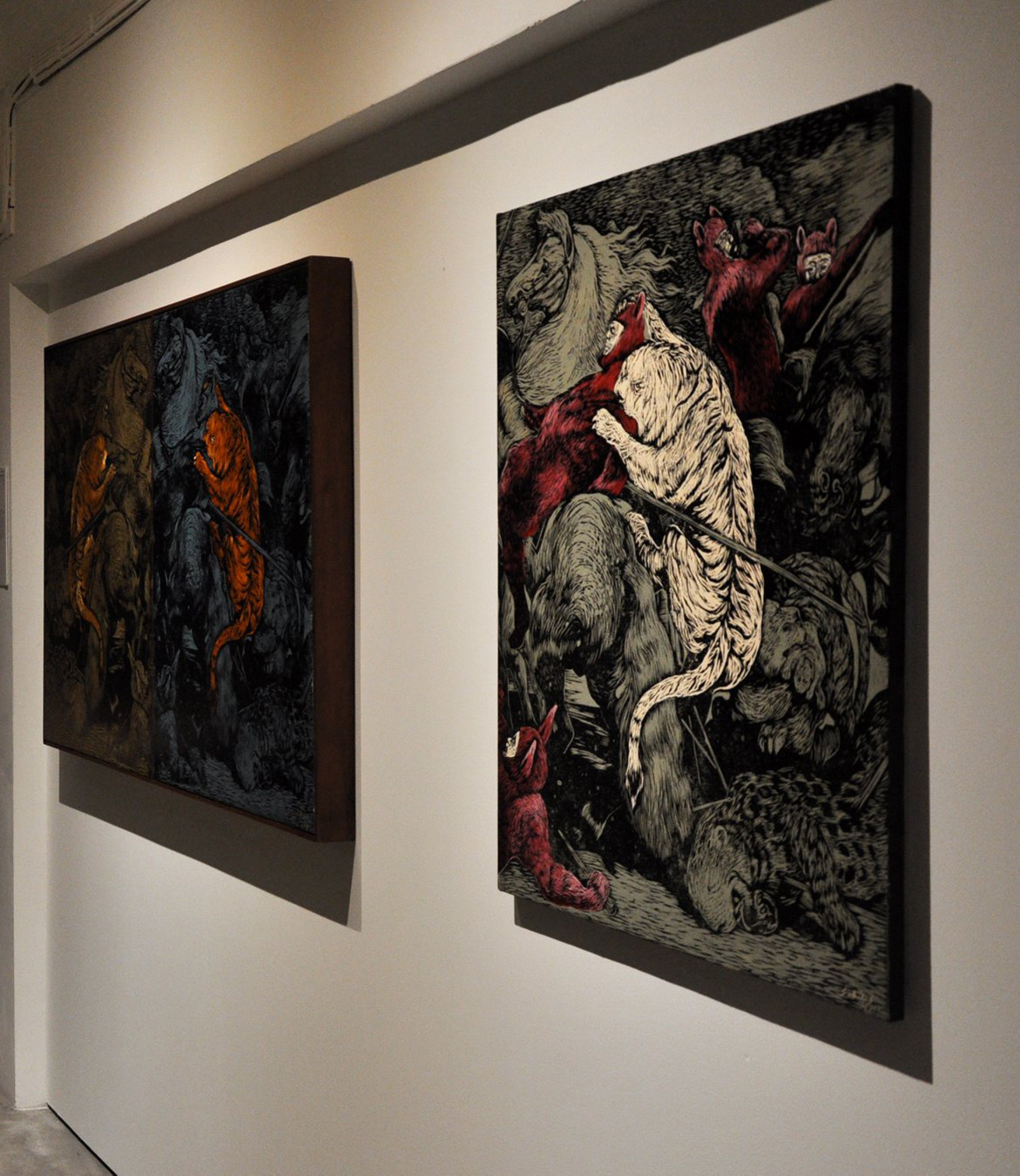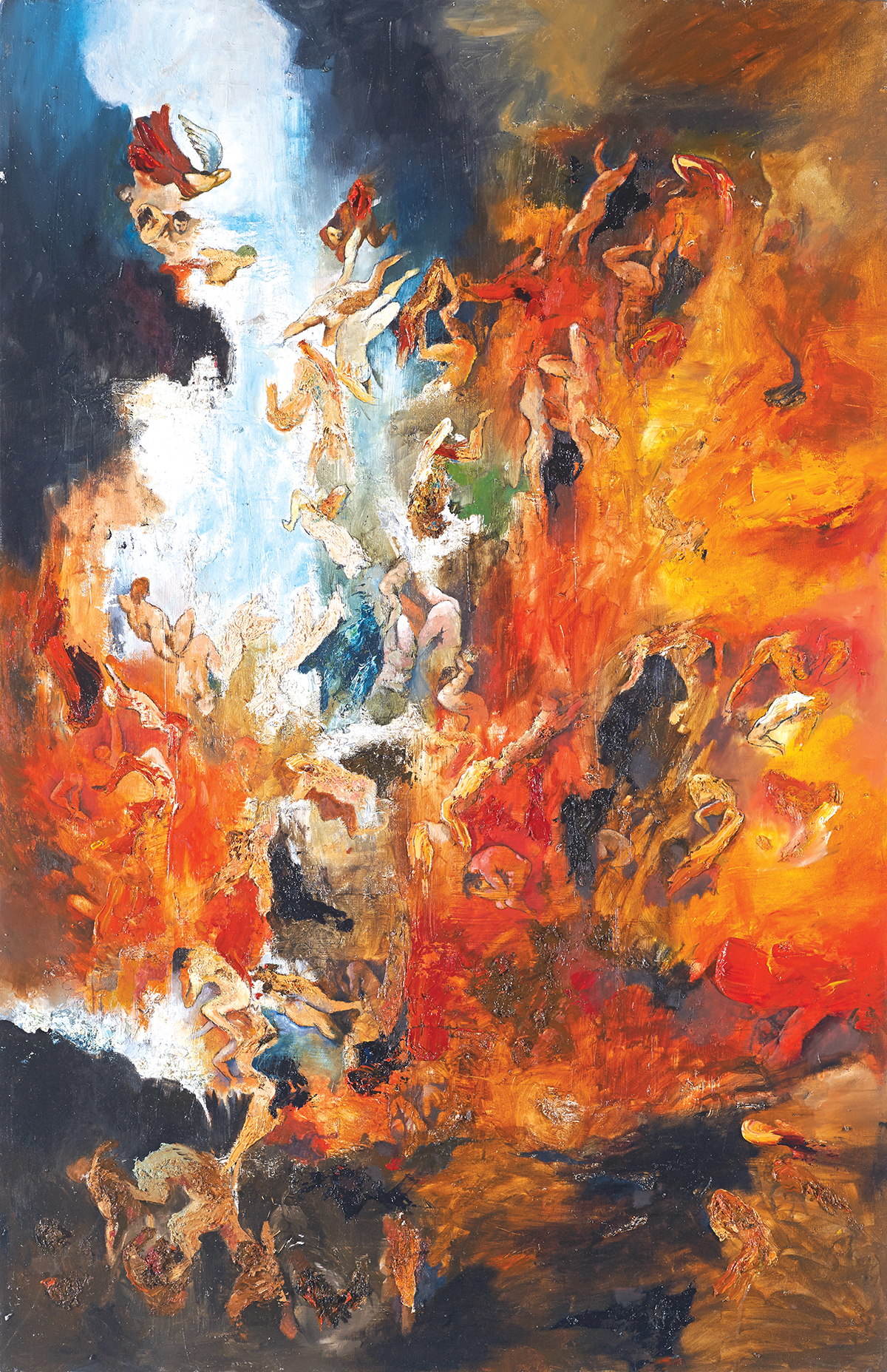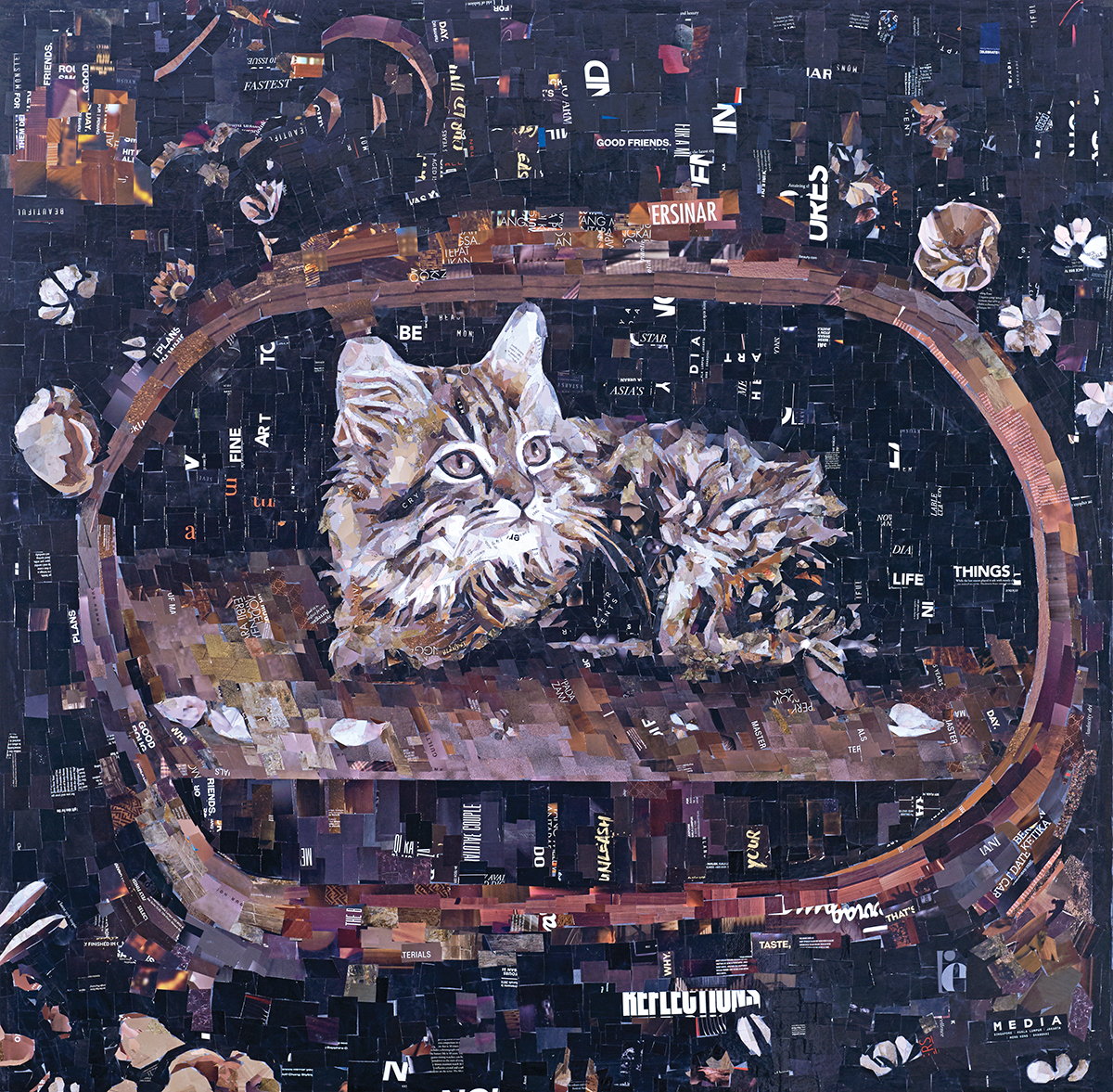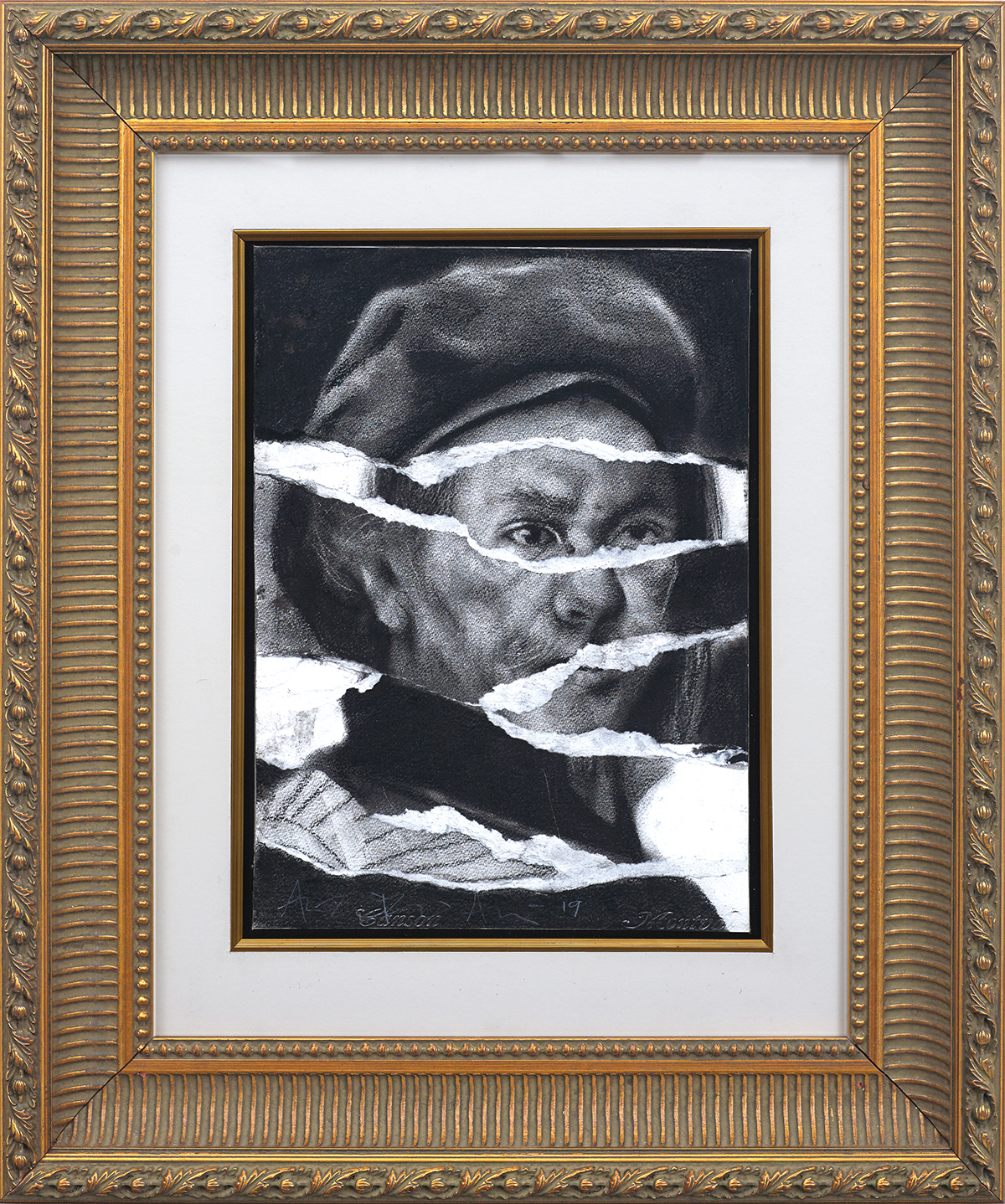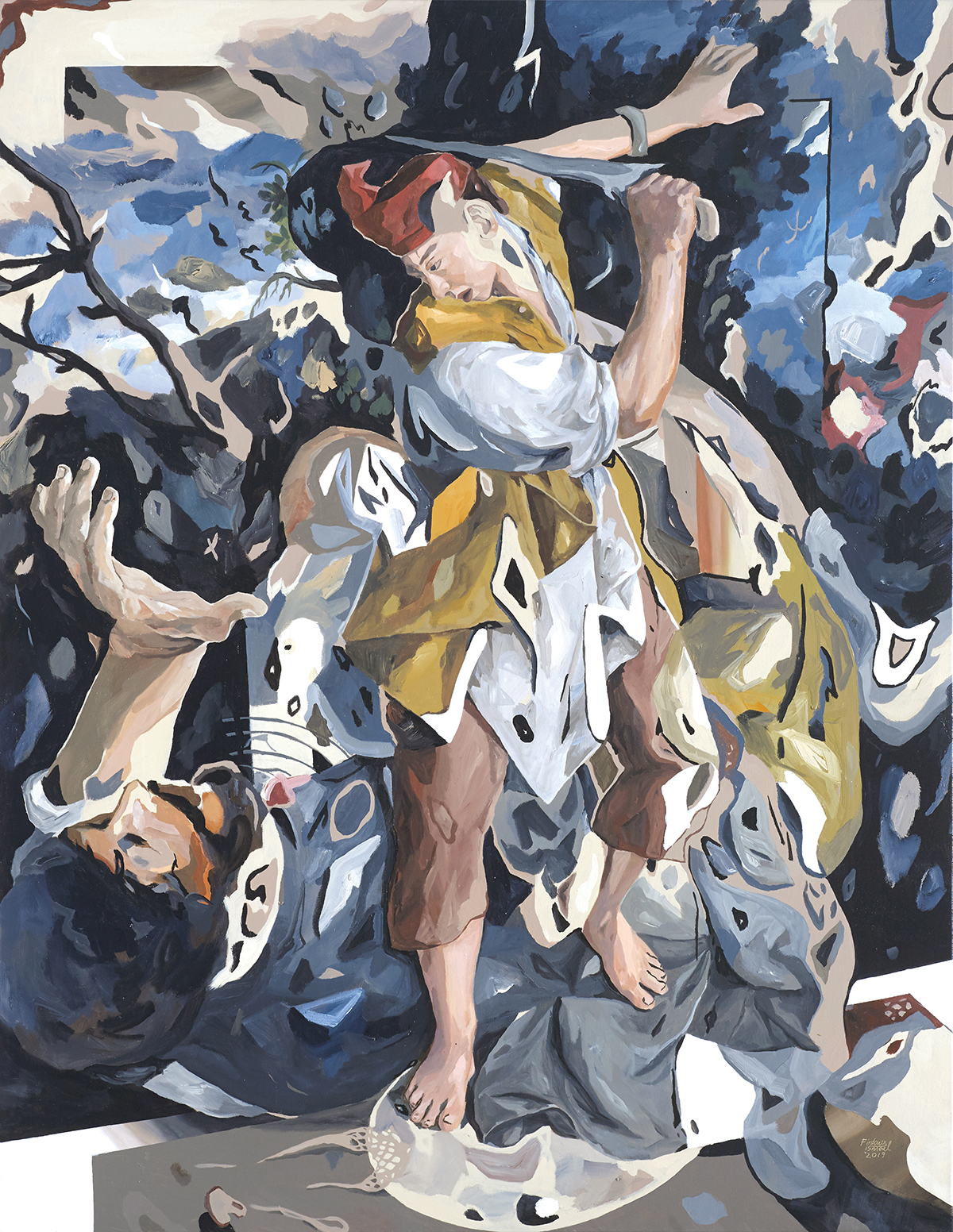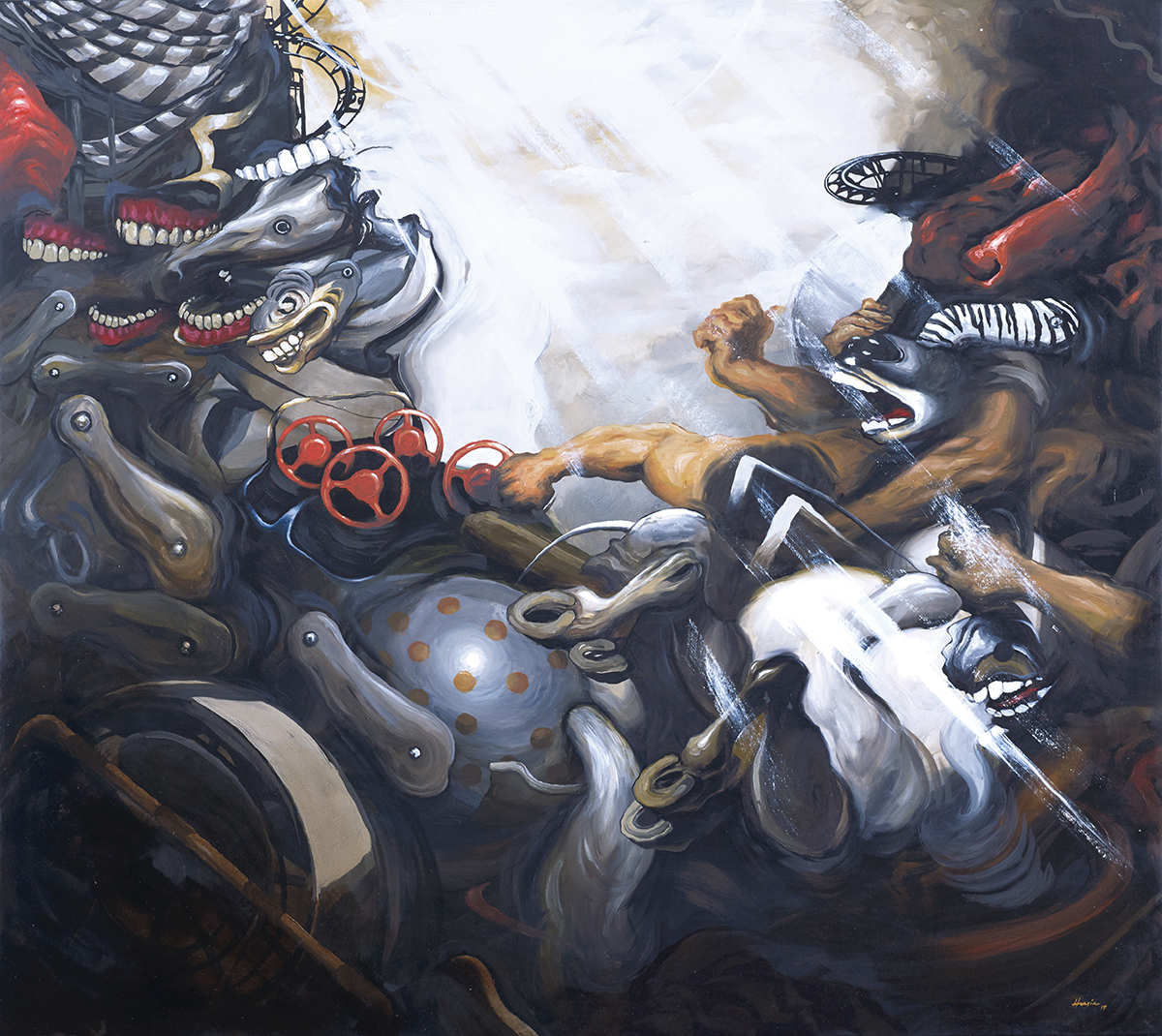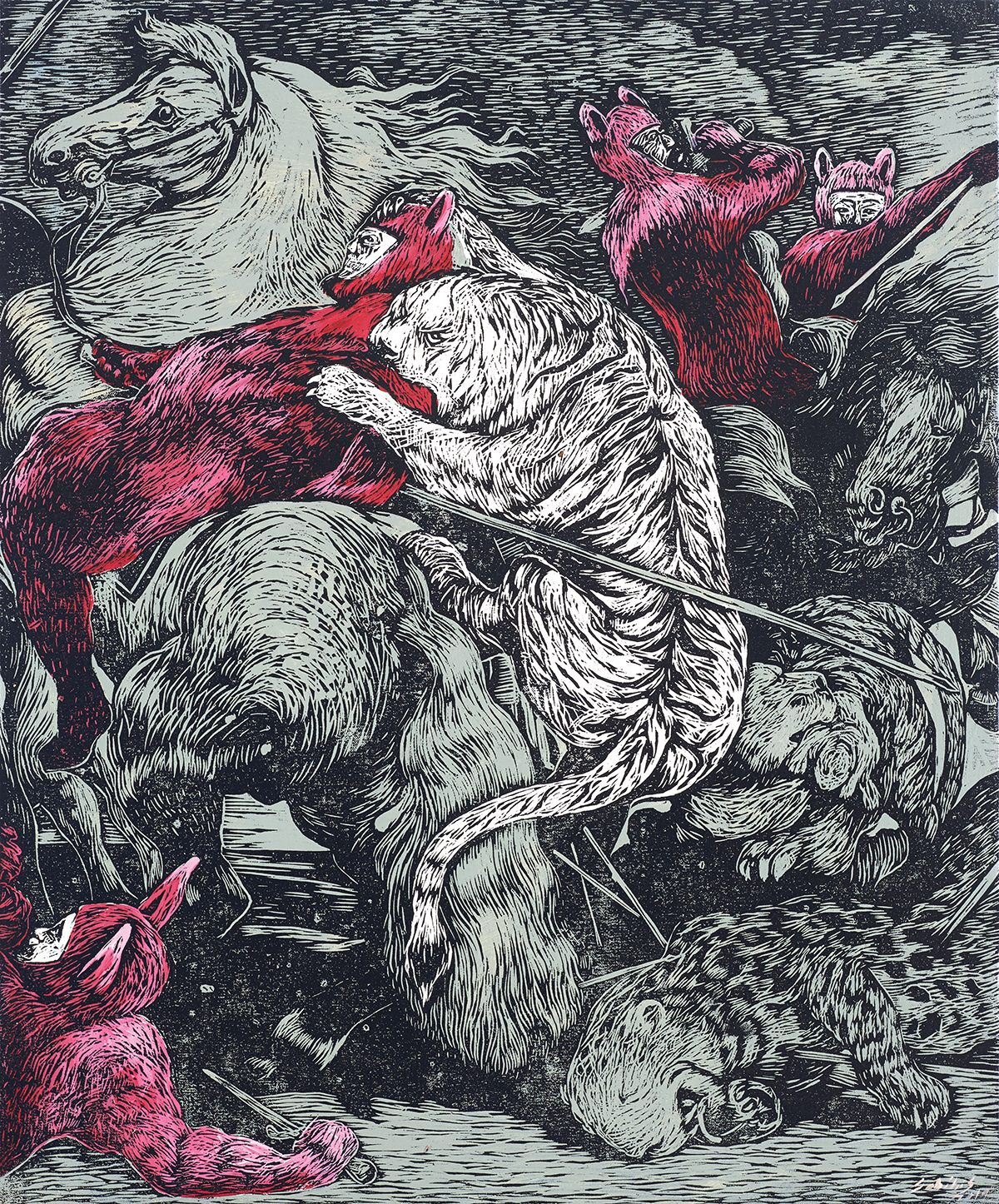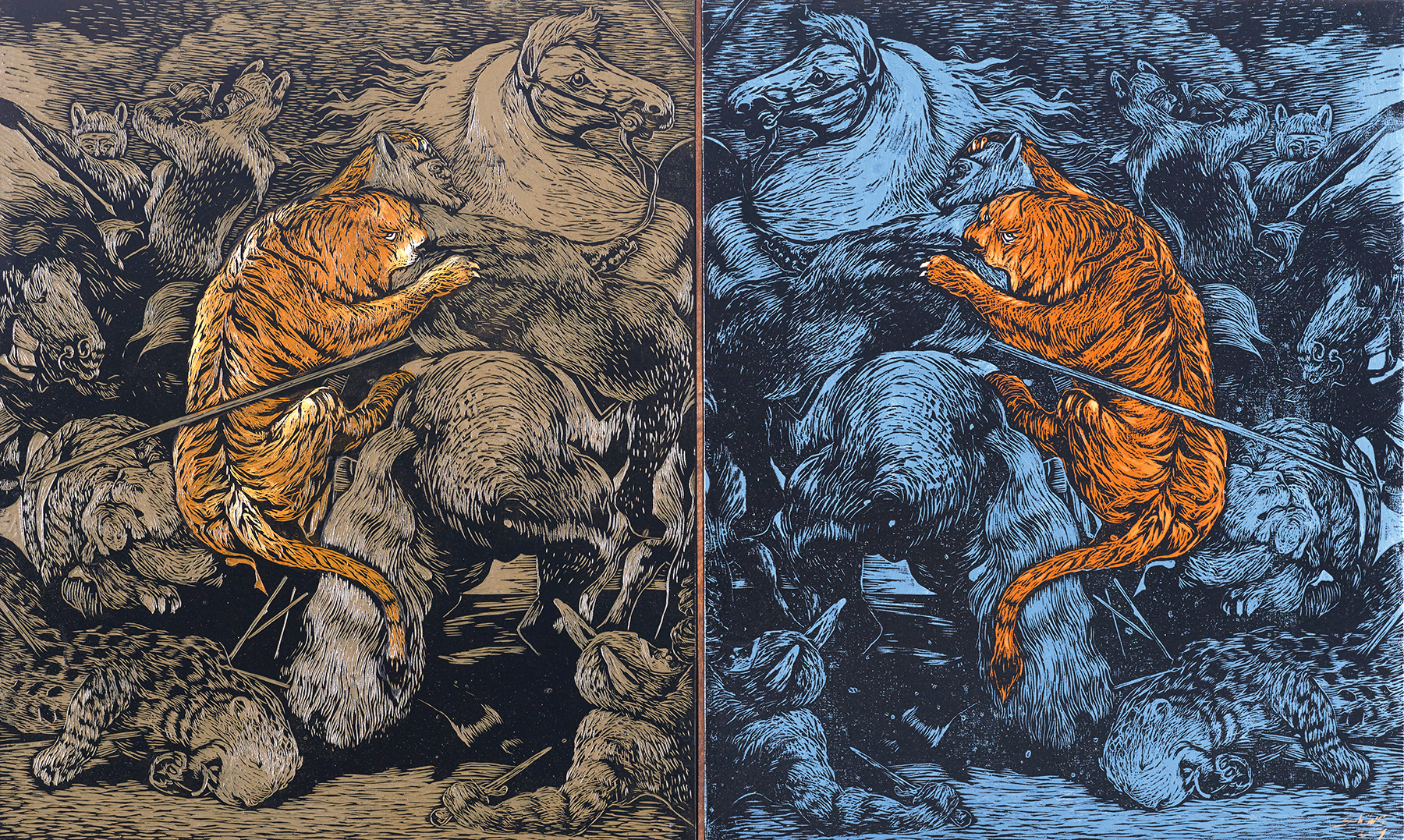Neo Baroque – A Malaysian Reinterpretation
Group Exhibition:-
Aely Manaf
Anisa Abdullah
Arikwibowo Amril
Firdaus Ismail
Hirzaq Harris
Husin Othman
Khairul Izham
Sabihis Md Pandi
Syahmi Jamaluddin
11th March – 15th April 2019
Core Design Gallery, Subang Jaya
*Click on images to zoom in
Background
In the recent years, there has been a growing concern within the art ecosystem regarding the lack of appreciation and understanding on the value of art history. The discipline of art history is crucial because it promotes critical thinking within visual art makers in drawing conclusions, interpreting and evaluating different artworks that may beneficial in the career development of an artist. However in this era of internet age; a world filled with millions of visuals that allows almost immediate access for contemporary visual makers to copy or even regurgitate fashionable imageries, resulting in the lack of critical thinking process which is crucial in the search of a self- identity.
Neo Baroque- A Malaysian Reinterpretation is premised on the anecdotal evidence that there is an intimate relationship in understanding art history, interpreting it and making art. Artists who are in formative stages of their identity should also be able to study the content, narrative as well as the formalistic approaches during Baroque era yet using the form of contemporary visual art to enrich their own works.
Why Baroque?
Baroque was chosen because of its grandeur, sensuous richness, drama, vitality, movement, tension, emotional exuberance, and a tendency to blur distinctions between the various arts. The term Baroque is believed by many scholars to come from the Portuguese word barocco also known as an imperfect pearl. One of the most significant artist that probably known to have influenced subsequent Baroque artists such as Peter Paul Rubens, Gian Lorenzo Bernini and etc is none other than Michealangelo Merisi Caravaggio. Caravaggio was commissioned by the Council of Trent to create simple visual representations but dramatic, realistic and clear in narrative, as a reaction against the intricate and formulaic Mannerist style which dominated the Late Renaissance. Caravaggio evolved quickly from his dominant Mannerist trained background and came to create his very own signature style that incorporates chiaroscuro, dramatic contrast between light and dark, and tenebrism, intensifying the contrast into dark ambience scenes with some spot highly lit as if by a spotlight. His theatrical drama like paintings along with his radical realism and macabre subjects became an influence to many subsequent Baroque artists and also the many generations of artists to come.
As we time travel to the twenty-first century year 2009, Ali Nurazmal Yusoff started imitating and created a parody of Caravaggio’s The Cardsharps by extending the work to place himself as part of the composition. It was an interesting event that prompted him to imitate Caravaggio, the artist was told by a collector that he can only paint naive or comic-like paintings, unlike his peers who are considered true figurative artists in the eyes of this collector. In retaliation to this unfounded statement, Ali Nurazmal Yusoff decided to hone his skills by creating a painting that can symbolically represent itself as masterpiece to the eyes of the audience. Subsequently after researching, he felt that Caravaggio’s figurative realism seems to be the closest approach to his formalistically trained background. Thus, came the birth of Ali Nurazmal’s first Imitation Master After Caravaggio.
Curatorial Objective and Process
At the start of the development process, the artists selected to participate in this exhibition are based on their medium, stroke and signature style. The idea is to provide a different visual excitement as contrast to the traditional forms of oil paintings and sculptures of the Baroque period. During the concept and progress stage, the artists themselves selects the relevant Baroque artists and artworks which they wanted to study especially the aspect of formalistic approaches and content then to reinterpret it into their own visual context.
Curatorial Findings
One of the main purpose of this curatorial objective was to encourage artists to move out of their comfort zone. Baroque art is known to be complex and dramatic that required the selected artists to study the basic formalism of composition, chiaroscuro, depth, perspective, form and especially the narrative that prompted the Baroque art movement and its deep influence that made it universally recognisable. Thus opening up possibilities on the various approaches that current contemporary practices that the artists themselves can expand even further.
An evident example of an artist who took is this route was Ali Nurazmal Yusoff, when he painted his first Imitation Master After Caravaggio in 2009. His past 10 years progressions has been very interesting, from realistic figures to drawing and painting in black and white to his breakthrough in Face Off that incorporates his own expressive style of abstraction and semi-realism. Albeit, he still revisits Caravaggio’s masterpieces every now and then to continue his series of Imitation Master while still studying intensively the different formalistic approaches. By 2016, he has transitioned to his seminal exhibition reALISM with pieces Resurrection, Ralik 2 and Push Button that masterfully blend the intuitive expressions against the realistic forms, creating an unparalleled deconstructed manifestation of moving figures.
Neo Baroque- A Malaysian Reinterpretation was inspired by this journey undertaken by Ali Nurazmal Yusof. Thus, to brings back the very first Ali Nurazmal Yusof’s Imitation Master After Caravaggio as part of the exhibition seems apt as it fits the flow of this exhibition’s overall narrative. As ten years later in 2019, it was interesting to see how these younger generation of artists can critically analyse the contents of Baroque history and reinterpret it into their own contemporary art form.
The curatorial findings for this exhibition were most interesting as most of the artists saw the possibilities in expanding their artistic practices be it in pushing the limits of their medium or even searching for an identity within the elements of their own local context. In terms of expanding practices in the contemporary form, artist like Anisa has managed to fluidise the visual aesthetics of paper collage despite the rigid structural form of the material. Khairul Izham was excited with his development of wires mimicking drawing lines to give the expression and intensity to the form. On the other hand, Sabihis Md Pandi was able to provide a different visual excitement as compare to what is expected of a Baroque painting with his complex wood cut and monochrome print artwork.
The role of reinterpretation also played a very important part in this exhibition as artists were encouraged to look into themselves and their identity, from the aspect of their own cultural elements or even their own social surroundings.
Both Firdaus Nordin and Syahmi Jamaludin critically dissected the sociopolitical situation in Malaysia and reflected their opinion through their own respective medium. Whereas Firdaus Ismail and Hirzaq Harris infused the use of Malay cultural representation such as silat and batik. Husin Othman and Aely Manaf recontextualise the disorder and confusion of some Baroque painting as a contemporary social issue.
In conclusion, Neo Baroque – A Malaysian Reinterpretation as a curated exhibition with its interesting theme is timely and apt as these artists are in their formative stages of their identity. The research in formalistic approaches and the role of interpretation was also important for artists to not only able to make use of the content but also to expand their artistic practices in the contemporary art form.



